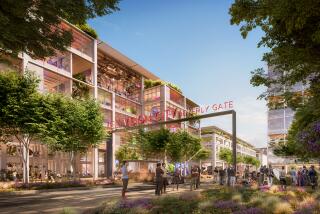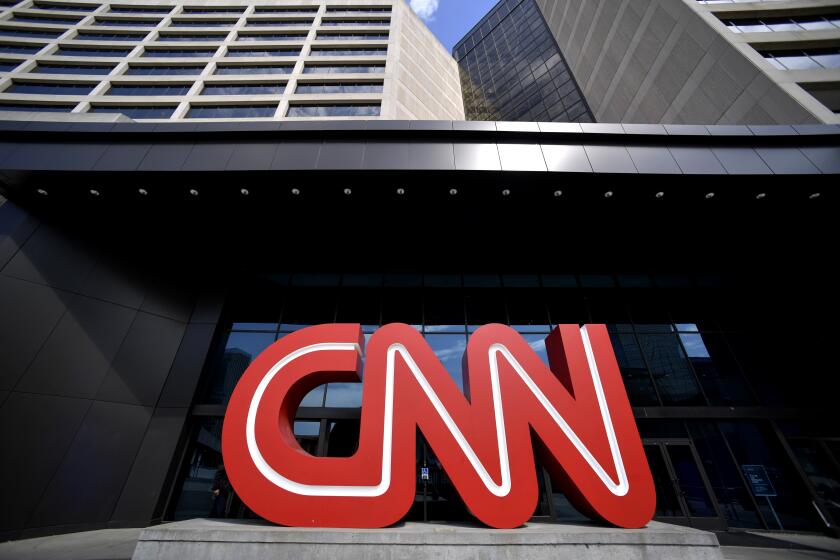Architect Takes Center Stage : Work on Golden Triangle Complex to Start This Fall
- Share via
LA JOLLA — Surrounded by masterpieces on canvas and in sculpture at the La Jolla Museum of Contemporary Art, a massive development took the spotlight briefly Monday as Naiman Co. executives unveiled their $190-million office-hotel-restaurant project scheduled to be built this fall in the Golden Triangle.
“Aventine,” named after one of Rome’s seven hills and designed by controversial East Coast architect Michael Graves, will shun the popular glass-and-steel high-rises that have become standard in the last few decades. It will reflect instead, Graves said, the glories of Rome and the tradition of more than four centuries of architectural history.
Graves’ Roman design will stand among more modern structures, which the architect criticized as he explained that his design will not echo the iciness of the modern monoliths but will blend with the landscape, and age and weather to echo the warmth and colors of its hilly environment at La Jolla Village Drive and Interstate 5.
Jack Naiman, Naiman Co. chief, said the 12-acre, 8-million-square-foot development is the largest and most costly ever to be built as a single unit in the San Diego area. It features a lake, a 400-room hotel, a 13-story office building, three theme restaurants, a private membership health club, underground and above-ground parking and landscaping, including Grecian and Roman gardens.
Naiman said construction is scheduled to begin Sept. 1. He also predicted that other major developments across the county would announce starts soon because of dropping interest rates and the present competitive money market.
Graves, a mild-mannered Princeton University professor and architect, took a few verbal swipes at modern architecture and at pseudo-traditional attempts to create copies of the masterpieces of the world’s architecture.
His design for Aventine, he said, is a blending of the best of the Roman and Renaissance periods modified to fit San Diego’s landscape. He also criticized the failure of Western architects to capitalize on the beauty--”the greenness and the wonderful light”--that the area shares with ancient-day Rome.
Graves said he masked the massiveness of the development by dividing it into several sectors of different shapes and forms, then binding the separate parts into a whole through colors, materials and repeated shapes. There are pergolas and arches, statuary and fountains, and even an office tower that resembles the Leaning Tower of Pisa, without the tilt. Among the colors he has chosen as reflective of the San Diego area are burnished golds, azure blues, Pompeian reds and verdant greens.
The architect’s outspoken antipathy to modern architecture came out several times in his explanation of his design as “not borrowing from Europe, Rome, but continuing a tradition” of centuries of architectural humanism. Modern buildings of reflective glass and steel are so “anonymous and alienating” that people don’t like to work in them, Graves said.
Naiman said that the 14-story hotel--a Hyatt Regency--will contain restaurants, a ballroom and meeting rooms that will make it the largest San Diego County convention center north of Mission Valley.
More to Read
The biggest entertainment stories
Get our big stories about Hollywood, film, television, music, arts, culture and more right in your inbox as soon as they publish.
You may occasionally receive promotional content from the Los Angeles Times.










